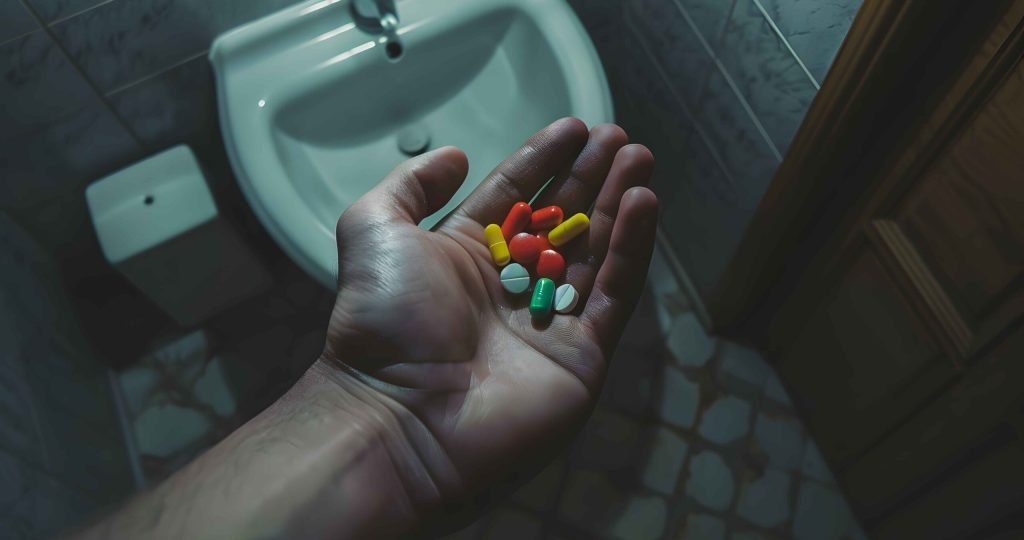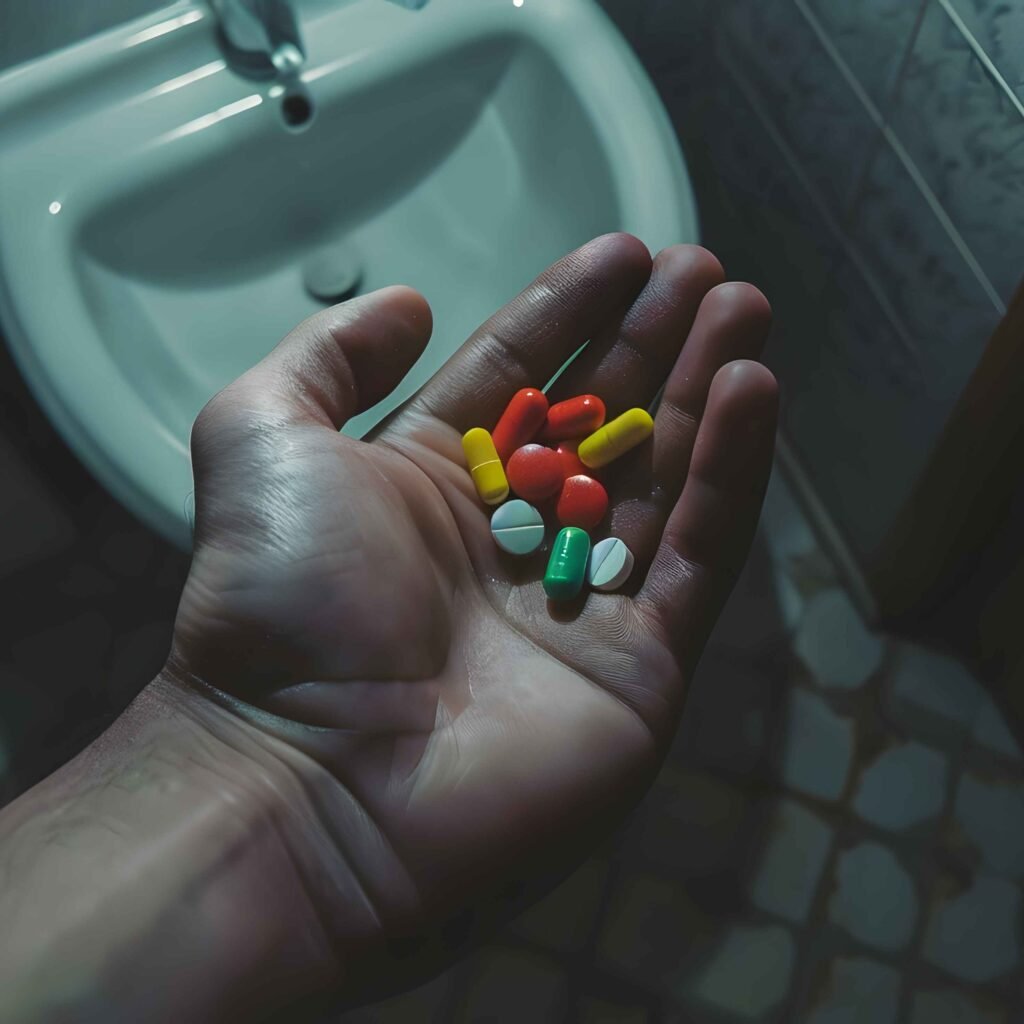13 July 2025
Category: Drug Regulation and Public Health Policy I
Drug Safety & Disposal I Pharmaceutical Waste Management
Written By:
Pharmacally Medical News Desk

“In past instances, when you have taken any medicine and completed the course, what did you do with the leftover medicines? Did you keep them for future use until expiry, or did you throw them in the dustbin?” Most of us either store leftover medicines for future use and forget about them altogether or discard them carelessly, unaware of the risks.
The safe disposal of medicines, whether used or expired, is important because every medicine contains various chemicals and active ingredients. Even though they are expired or unexpired, they still possess some activity. Whenever medicines are released into the environment, intentionally or unintentionally, such as by throwing them in the garbage or flushing them down the toilet, they pose a serious threat to the environment, aquatic life, wild animals, and birds. In due course, these threats loop back to humans, sometimes in the form of antibiotic resistance and other health hazards. To address this issue, strong rules and regulations are needed from national and international health regulatory bodies.
In a significant move, the Central Drugs Standard Control Organisation (CDSCO), India, under the Ministry of Health and Family Welfare, has released a comprehensive guidance document for the disposal of expired and unused medicines.
This advisory lays down detailed procedures for the safe disposal of expired drugs, specifically intended for drug manufacturers, wholesalers, and retailers. It outlines the complete process for how expired medicines should be handled and disposed of. Additionally, the advisory includes important instructions for the general public regarding the safe disposal of certain medication that may be harmful or, to some extent, fatal with just one dose, so such expired and unused medication should not be kept at a home where it is accessible to any person or pet. Such medication should be flushed down the toilet or sink to prevent danger. A total of 17 such critical expired drug categories have been identified, and specific guidelines have been provided on how to dispose of them safely, even if only one dose remains.
The identified 17 drugs are
The following medicines, if found unused or expired at the home, should be immediately flushed down the toilet or sink
Sr. No. | Name of Drugs |
1 | Fentanyl |
2 | Fentanyl Citrate |
3 | Morphine Sulfate |
4 | Buprenorphine |
5 | Buprenorphine Hydrochloride |
6 | Methylphenidate |
7 | Meperidine Hydrochloride |
8 | Diazepam |
9 | Hydromorphone Hydrochloride |
10 | Methadone Hydrochloride |
11 | Hydrocodone Bitartrate |
12 | Tapentadol |
13 | Oxymorphone Hydrochloride |
14 | Oxycodone |
15 | Oxycodone Hydrochloride |
16 | Sodium Oxybate |
17 | Tramadol |
Why Only These 17 Medicines recommended for Flushing
The CDSCO has advised that only a select list of 17 medicines should be flushed down the sink or toilet by the general public, and this recommendation is not arbitrary. It is based on the unique risks posed by these specific drugs. Here’s why they were selected:
High Risk of Accidental Exposure
These drugs include potent opioids, sedatives, and central nervous system depressants like fentanyl, oxycodone, methadone, and morphine. Even a single dose can be fatal, especially to children, pets, or individuals not prescribed the medication. Flushing eliminates the risk of these drugs being accidentally ingested if left in household trash.
Potential for Misuse and Abuse
These medicines are highly addictive and frequently misused. Retaining unused doses at home increases the risk of theft, diversion, or illicit use. Flushing ensures immediate and irreversible disposal, minimizing the chance of misuse.
Inadequate Take-Back Infrastructure
In many areas, especially rural or underserved regions, drug take-back facilities or hazardous waste facilities may not be available. Flushing offers a practical, immediate, and risk-reducing option for these specific high-risk drugs.
The most important question: Is it justifiable to flush the medicine into the environment?
While flushing most medications is generally discouraged due to the risk of environmental contamination, particularly to aquatic life, the potential danger to human life from improper retention of these 17 high-risk drugs outweighs environmental concerns. Recognizing this, agencies such as the US FDA and WHO support flushing such medicines under specific conditions. The Biomedical Waste Management Rules, 2016, also acknowledge the need for secure and immediate disposal of certain hazardous pharmaceuticals. Also, since these drugs are regulated under the NDPS Act or are Schedule H/Narcotic drugs, secure disposal becomes even more critical.
Legal Framework and Compliance
This CDSCO advisory draws legal support from some of the strong rules and regulations; these rules provide the legal foundation for the safe disposal of expired and unused medicines in India. They ensure that drugs, especially hazardous, narcotic, or radioactive ones, are handled, stored, and destroyed in a way that protects public health. These rules are
- Drugs and Cosmetics Rules, 1945
- Biomedical Waste Management Rules, 2016
- Narcotic Drugs and Psychotropic Substances Act, 1985
- Atomic Energy Act, 1962 (for radioactive drugs)
Conclusion
As one of the largest pharmaceutical markets in the world, India faces a unique responsibility in ensuring not just access to medicines but also their safe disposal. Unfortunately, public awareness around the correct methods of disposing of expired or unused drugs remains low. This becomes especially dangerous when it comes to some high-risk medicines such as opioids and controlled substances, which, if left unused at home, can lead to fatal accidental ingestion, misuse, or addiction. While flushing most medicines is generally discouraged due to environmental concerns, in the case of these specific drugs, the immediate threat to human life far outweighs potential ecological risks. Recognizing this, CDSCO’s advisory prioritizes safety over contamination fears, aligning with global practices.
References
Guidance document on disposal of expired/unused drugs (WI/01/DCC-P-25), CDSCO, Directorate General of Health Services, India, 26 May 2025
Drug Disposal: FDA’s Flush List for Certain Medicines, US Food and Drug and Administration, https://www.fda.gov/drugs/disposal-unused-medicines-what-you-should-know/drug-disposal-fdas-flush-list-certain-medicines
Guidelines for the Control of Narcotic and Psychotropic Substances, World Health Organization 1984, https://iris.who.int/bitstream/handle/10665/39299/9241541725_eng.pdf

